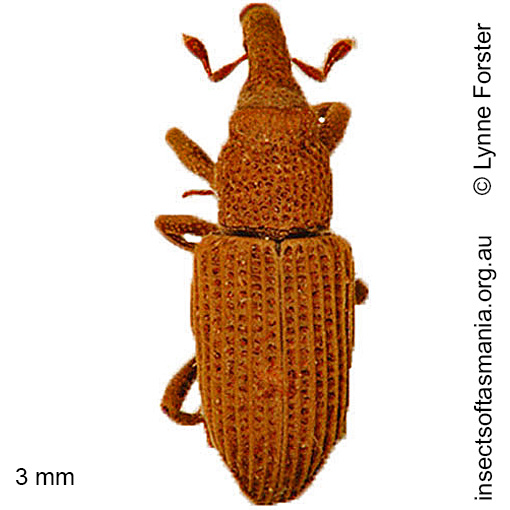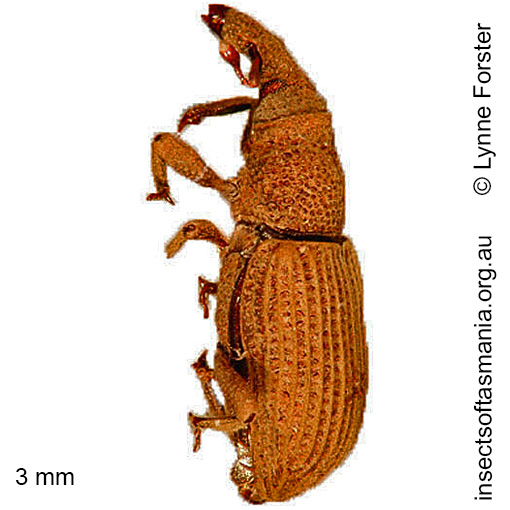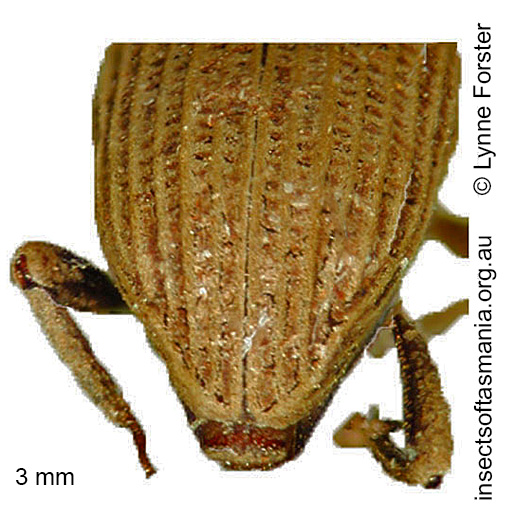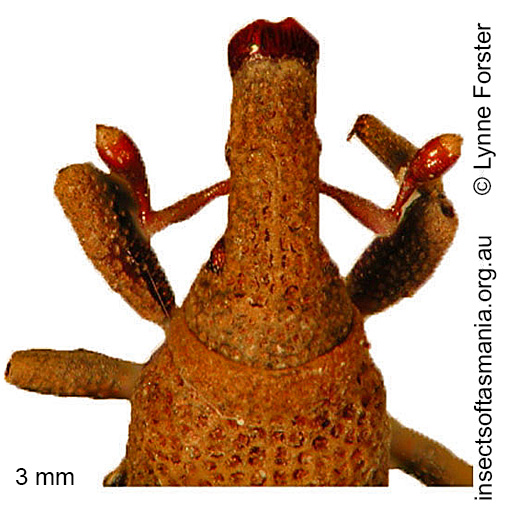
Dryophthorus ECZ sp 01 (a species of weevil)
Basis for Tasmanian occurrence
TMAG collections
Classification
Order: Coleoptera
Suborder: Polyphaga
Superfamily: Curculionoidea
Family: Curculionidae
Subfamily: Dryophthorinae
Tribe: Dryophthorini
Morphology
Typical length (mm): 3
Flightedness: winged and assumed capable of flight
Morphology (characterised by L. Forster): — Elytra with ridges which are the same height between all rows of punctures; evenly rounded apically (when viewed dorsally) — Eyes usually narrowly elliptical, with dark edges — Wings present.
Source literature on morphology and taxonomy (*primary taxonomic source, where identified):
Zimmerman, E.C. (1994b). Australian Weevils, Vol. 3. East Melbourne: CSIRO.
Ecology
Assumed larval feeding: wood-feeder
Association with dead wood or old trees: obligately saproxylic
Ecological attributes: — Associated with fibrous surface rot (Yee et al., 2006) — Associated with mudguts (Yee et al., 2006) — Associated with red-brown blocky muddy rock (Yee et al., 2001) — May occupy logs or trunks of Eucalyptus obliqua, at least temporarily, since found having emerged within a year of felling (Grove & Bashford, 2003) — May occupy logs or trunks of Eucalyptus obliqua, at least temporarily, since found having emerged within six years of felling (Grove et al., 2009).
Collection method(s) for TMAG material: — Baited trapping (funnel trap) — Emergence trapping from log of Eucalyptus obliqua — Hand collection (substrate not specified) — Trunk window trapping (Harrison, 2007).
Source ecological literature:
Grove, S.J. & Bashford, R. (2003). Beetle assemblages from the Warra log decay project: insights from the first year of sampling. Tasforests 14: 117-129.
Yee, M. et al. (2001). Not just waste wood: decaying logs as key habitats …: the ecology of large and small logs compared. Tasforests 13: 119-128.
Grove, S. et al. (2009). A long-term experimental study of saproxylic beetle … succession in Tasmanian Eucalyptus … logs… In: Fattorini, S. (Ed.), Insect Ecology and Conservation. Research Signpost, pp. 71-114.
Harrison, K.S. (2007). Saproxylic beetles associated with habitat features in Eucalyptus obliqua trees in the southern forests of Tasmania. PhD thesis, Dept. of Zoology, Univ. of Tasmania, Hobart.
Yee, M. (2005). The ecology and habitat requirements of saproxylic beetles native to Tasmanian wet eucalypt forests: potential impacts of commercial forestry practices. PhD thesis, Univ. of Tasmania, Hobart.
Yee, M. et al. (2006). Brown rot in inner heartwood: why large logs support characteristic … beetle assemblages … In Grove, S.J. & Hanula, J.L. (eds.) Insect biodiv. and dead wood, pages 42-56. USDA For. Serv., SRS.




